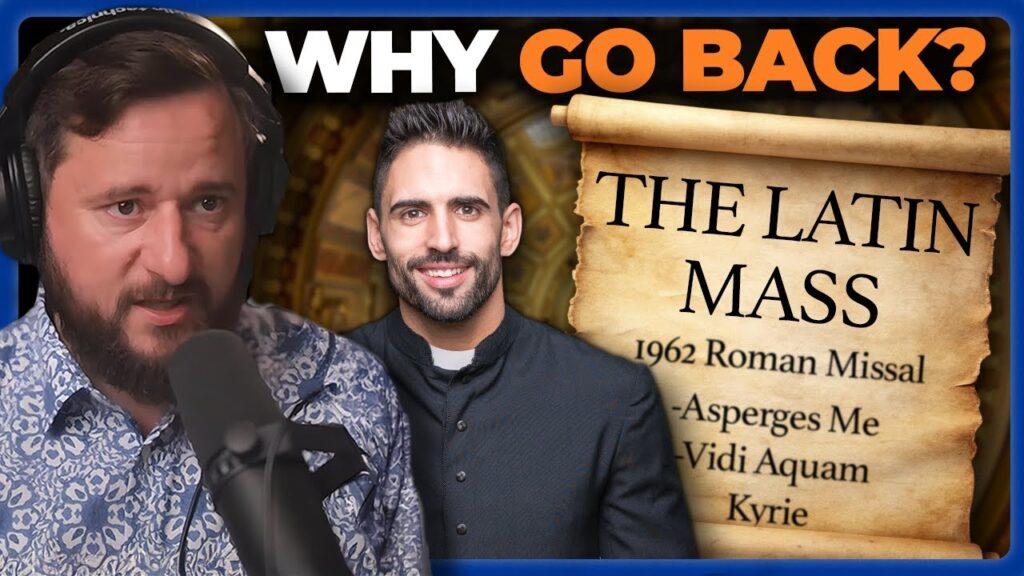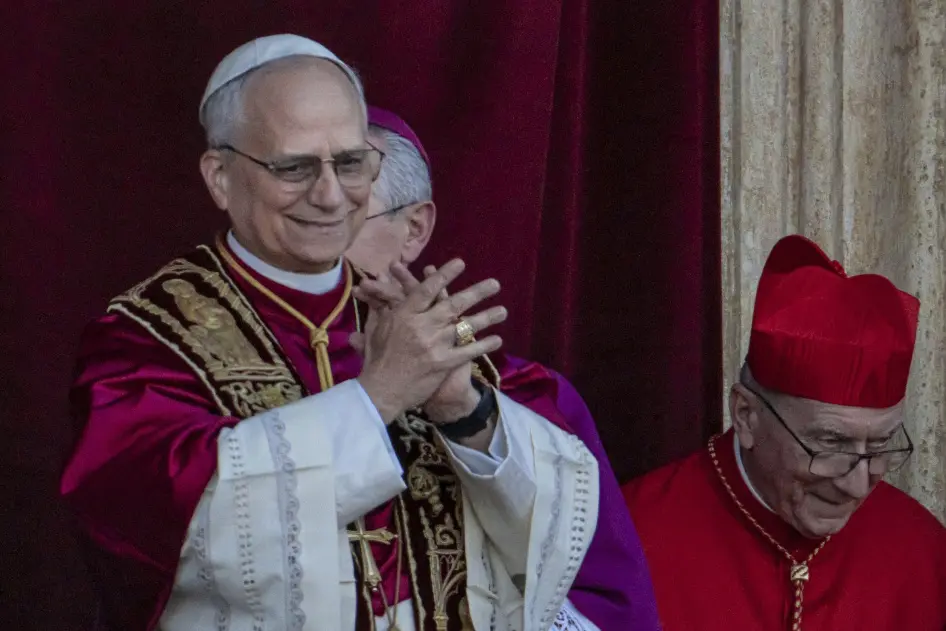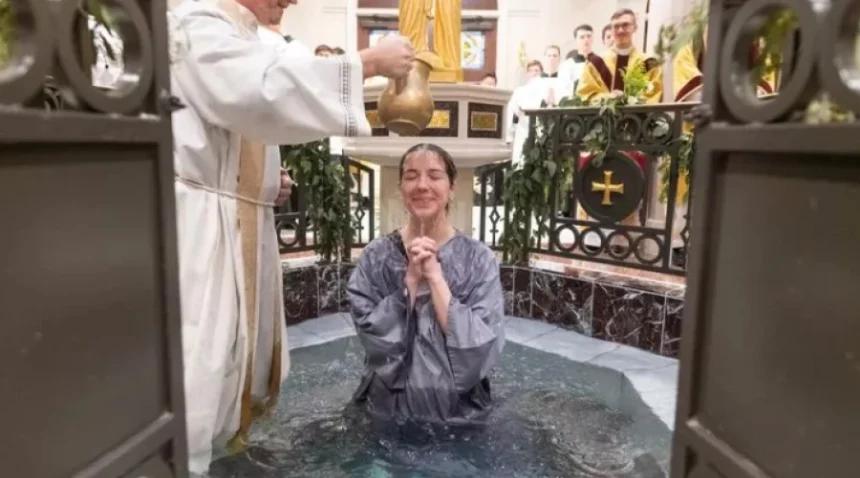In a time when trends shift rapidly and attention is short, something unexpected is happening: more young adults are joining the Catholic Church. Across the United States and in countries like Austria, Belgium, and Sweden, reports show sharp increases in adult baptisms and confirmations.
Some dioceses have seen growth between 30% and 70%. This past Easter, Notre Dame University welcomed more new Catholics than ever before, and Los Angeles saw over 5,500 adults join the Church. In some parts of Europe, adult baptisms have gone up by as much as 85%. What is drawing Generation Z and young millennials to Catholicism, and what are they searching for?
For many of these new Catholics, their story starts with a deep feeling of emptiness. Sydney Johnston, age 30, grew up attending a nondenominational church, but drifted away from religion while at university.
“I kept working harder, thinking success would fill the gap, but it never did,” she shared. The COVID-19 pandemic halted her busy life and made her rethink what she valued. “Everything felt chaotic, and I wanted something that didn’t change.”
Her experience reflects what many young people felt during the pandemic. Disrupted routines and growing uncertainty led to questions about life’s purpose. Yale Professor Nicholas Christakis notes that major crises often lead people to seek faith.

YouTubers Inspiring Faith
While some expected religious interest to fall after the pandemic, the opposite has happened. Young people are being drawn by the stability and order they find in Catholicism’s traditions. Father Michael La Grange, a priest in New York, has seen many young adults join the Church through the Rite of Christian Initiation of Adults (RCIA). “People are looking for purpose and a clear path,” he says.
Personal struggles often lead to reflection, but the internet has played a key role in these conversations. Adrian Lawson, a software developer from Southern California, discovered Catholicism after watching a debate online. Raised without much religious structure and at times an atheist, he was searching for answers while struggling with his mental health.
“The arguments I heard were logical and based on history. They were hard to ignore.” He believes praying the rosary now helps with his anxiety and depression.
Websites and YouTube channels like Catholic Answers, Pints with Aquinas, and Shameless Popery are attracting curious minds. Apologists such as Trent Horn and Scott Hahn break down common myths and explain the faith in a way that makes sense. Social media also plays a part, with influencers sharing their own stories and making the Church feel approachable.
“Online, I found a treasure trove of information about Catholicism,” says Johnston. “It was honest and explained things well.”
But online searching often leads to visiting a church in person. For Lawson, his first Mass was unforgettable: “The atmosphere, the music, the ritual—it felt timeless.” This combination of digital discovery and real-world experience appeals to young people who value authenticity.
Catholic Tradition Offers Stability
The beauty and history of the Catholic Church are a big draw for many converts. Taylor New, 27, from Cincinnati, says watching a video on the history of the Mass changed her mind about faith. “The rituals are moving. The Church feels strong and lasting, which gives me comfort.”
Traditional elements of the liturgy, from incense to Gregorian chants, attract many young adults, especially in parishes that keep these customs alive. In Detroit, traditional churches are thriving while more modern ones struggle to keep young people engaged. Mark Thompson, who returned to Catholicism after leaving the faith, points to traditional worship as a big reason for his return.
This interest isn’t limited to the Mass. The beauty of major Church celebrations, especially during Holy Week, also has a strong pull. The recent election of Pope Leo XIV, the first American pope, has inspired many. His choice of traditional attire at his first appearance connected with young Catholics hungry for meaning. “Pope Leo XIV has a presence that draws people in,” says a well-known Catholic influencer. “He’s inspiring a new wave of interest.”

A Stand Against Modern Culture
Part of Catholicism’s appeal is its clear moral teaching. Many young people, tired of constant arguments, self-focus, and shifting values, see the Church as providing direction. Emily Chen, a Notre Dame student who joined the Church this Easter, puts it simply: “The world tells you to do what you want, but that leaves you empty. Catholicism sets boundaries that help life make sense.”
This attraction is especially strong among young men, some of whom are interested in the Church’s teachings on family and virtue. Even high-profile converts like Vice President J.D. Vance reflect this trend. Still, Pope Leo XIV has pushed back against some of Vance’s views, stressing the importance of love and community over politics. Catholic teachings on marriage, sexuality, and service to others stand out to those who feel let down by what they see in wider culture.
While online content and the liturgy bring people to the Church, personal relationships keep them there. Joe Heschmeyer, who runs the podcast Shameless Popery, says community is key. “Most converts can name someone who invited them or answered their questions.” For Chen, it was a classmate who explained the importance of the Eucharist. For Lawson, it was a welcoming priest.
Parishes with strong communities and youth programmes are seeing the most growth. In Fort Worth, Texas, the number of new converts jumped 72% from 2023 to 2024, thanks to active RCIA courses and youth groups. “Doctrines are important, but people stay because they feel supported,” says Father La Grange.

Pope Leo XIV Inspires New Energy
The arrival of Pope Leo XIV has added to this momentum. His background from Chicago and time spent doing mission work in Peru make him relatable. His first speech called for peace and justice, which struck a chord with those looking for a faith that’s both traditional and relevant.
Some believe Leo XIV’s focus on tradition, along with his calls for social action, will encourage even more conversions. Others, like Johnston, appreciate his approach: “He stands firm, but he also cares. The Church feels both strong and welcoming.”
Despite this growth, there are hurdles. Not all converts stay involved over the long term. RCIA leaders say some lose interest after joining, and Pew Research notes that the Church loses more members than it gains. “New Catholics want to keep learning and growing,” says Heschmeyer. “Parishes need to help them feel included.”
Also, the phrase “en masse” may exaggerate the trend. Researcher Ryan Burge says the number of new converts, while impressive, is small compared to the wider Catholic population. “It’s a revival, but not a tidal wave.”
Stories like those of Johnston, Lawson, New, and Chen show a slow but steady change. Young adults are finding hope, community, and stability in Catholicism as they look for something lasting. With Pope Leo XIV leading the Church, this generation’s interest points to a real hunger for meaning and belonging—a faith that, as Johnston puts it, “feels like home.”
How do you become Catholic? Learn how to join the Catholic Church with Catholic Answers
Sources: Word on Fire, The New York Post
Related News:
Study Finds Prayer and Spirituality Linked to Better Health






